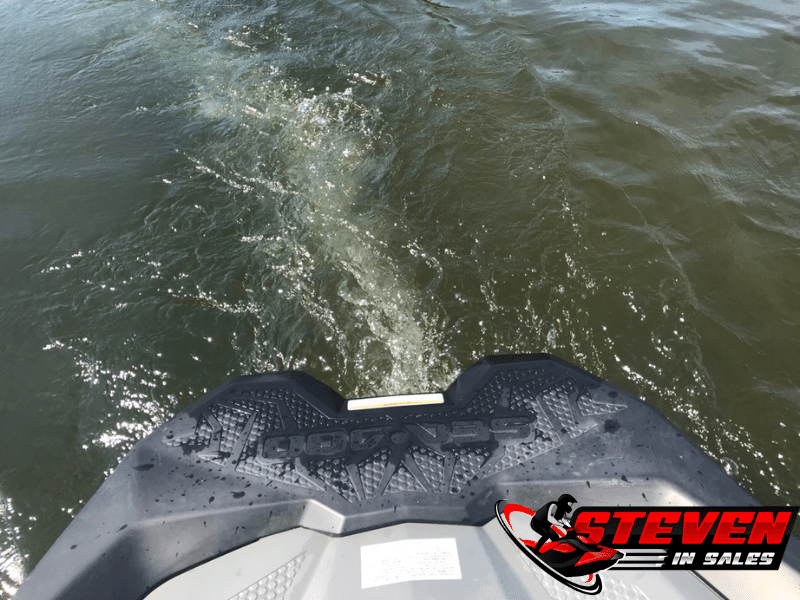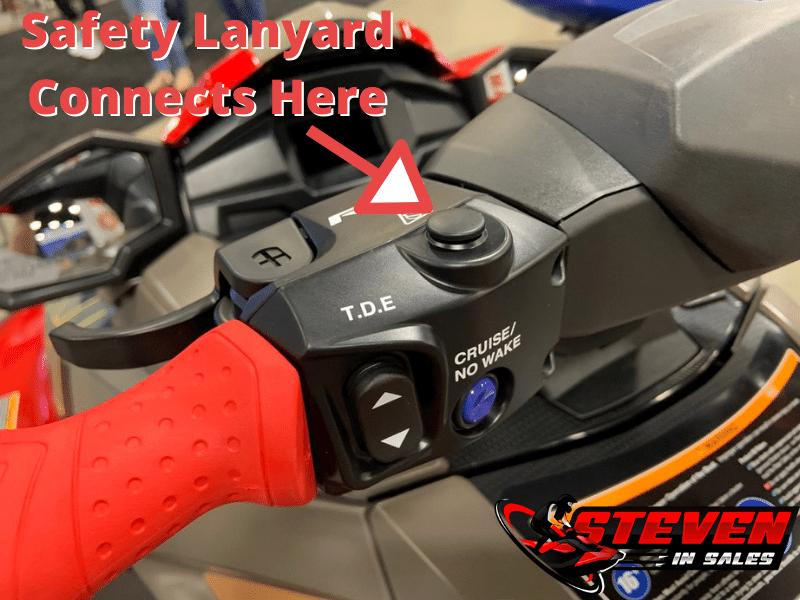There are a lot of “what-ifs” that many new riders like to think about. It’s understandable, as watercraft are very new to many people. Plus, there is a lot to take in and only so many warm days to ride.
But one of those what if is about falling off. It’s a bit more tricky these days since they keep getting bigger, but it’s still possible.
A PWC will –NOT– turn around or go in a circle if you fall off it, as you should have the safety lanyard connected to your life jacket and the machine. So if you fall off, the lanyard is pulled and the engine shuts off.
The thinking that they go in circles if you fall off is an old and way outdated thing. Before safety lanyards, which came around in the ’90s, a PWC would idle away and often in a circle as that is how the handlebars were left when the rider fell off.
Nowadays, a PWC won’t start unless you have the safety lanyard attached and once removed, the engine shuts off. On models with brakes, it’s not uncommon for the ski to go into neutral (a spot between forward and reverse) when the lanyard is removed, which acts as a slight brake to keep the thing from drifting too far from you.
The lanyard attaches to the craft, and you must “clip” it to your life jacket. There are a few lanyards that wrap around your wrist, but it’s best to stick to the ones that clip to your life jacket instead.
This Is What Happens
If you fall off and the safety lanyard was properly connected, the engine will shut off and drift a little away from you.
The thing will not come back to you, it’s a dud until you get back on it.
Along with connecting the lanyard properly, you should also be wearing a life jacket approved by the coast guard! When you fall off, the life jacket will keep you afloat.
It’s also important you get a life jacket that is the correct size for you. I see far too many people get life jackets that are too big for them, and that will only make things worse.
Life jackets don’t go off t-shirt sizes, it’s best to try them on to see how they fit. This video does a great job of showing you how to pick the correct size life jacket.
Modern PWCs
Falling off has become less common these days as they have gotten a lot bigger. Though, catching a wave wrong or doing something silly can still have you fall off. (And accidents still do happen, here are jet ski accident stats)
Falling off, or even starting off in the water (Sea-Doo HX), was a common thing for models made before the early ’00s. Since 2002 and every decade since, have gotten more stable.
Smaller Is Less Stable
The more people you have on them, the less stable it becomes.
The smaller the watercraft, the less stable it becomes, too.
Rec-Lite watercraft are the least stable and most affordable options available. Recreational models offer greater stability compared to Rec-Lite ones, and the Luxury models rank as the most stable among them.
To see what category of watercraft fall under Rec-Lite, check out our 2024 Sea-Doo vs Yamaha vs Kawasaki post.
How To Get Back On From The Water
- Make sure the engine is off, yank the lanyard off if you need to.
- Locate the rear.
- Find the reboarding ladder.
- Pull down the reboarding ladder.
- Place a knee on the ladder, then your other knee.
- Grab onto a handle in the rear.
- Step to your feet and crawl onto the back of the jet ski.
- Crawl to the seat, don’t stand up as it will make the vessel more tipsy.
If you have someone else on the machine, make sure they are supplying a counterbalance when you’re getting on.
This video will show you how to get back on your Sea-Doo:
If the jet ski was flipped, follow this guide on how to flip it, as it’s important you flip it the right way.

